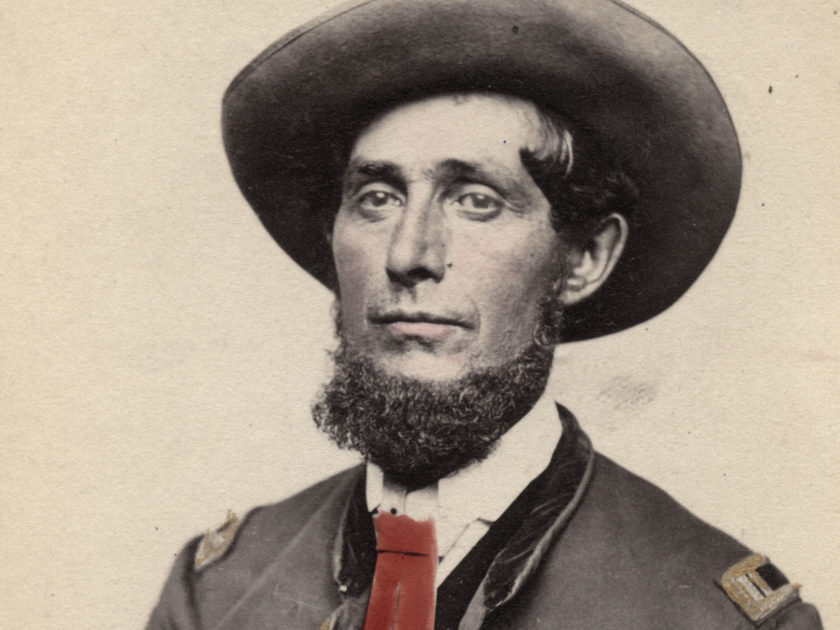By Richard A. Wolfe
Without the Civil War, the state of West Virginia would not exist.
In May 1861, when the citizens of Virginia voted overwhelmingly to secede from the Union, the electorate in the western counties decided against secession. The northwestern counties of Virginia voted decisively to remain loyal to the Union.
Pro-Union feelings ran so strong that the counties sent delegates to Wheeling to counter the secession vote. Representatives from the western counties met in Wheeling, and formed the Restored or Reorganized Government of Virginia, with Francis H. Pierpont as governor. President Lincoln recognized the Restored Government as the legitimate government of Virginia. When Lincoln called for 75,000 men, the Restored Government stepped up to meet the state quota, and mustered in the first federal company from Virginia on May 10, 1861.
The rapid series of events was prompted in part by the Confederate government in Richmond, which branded the politicians in Wheeling as traitors. Driven by a sense of urgency, the populace of Wheeling and allied towns and villages formed companies and regiments to preserve the Union and to defend western Virginia. Two years would pass before the breakaway counties formally achieved statehood on June 20, 1863.

One of those early organizations was a cavalry company, recruited by James Utt of Morgantown in the summer of 1861. Utt and his troopers actively patrolled their homeland. In July, Charles McLane wrote to his father from Weston: “I am you see in a different place than when I last wrote to you. I am not sworn in yet. You know that nearly all of our company are at home. Well the General ordered us to Weston where he had no business to. We started just at dark we had not a weapon rode nearly all night no place to sleep and then wanted the men to go to camp Sutton about 41 miles East of this place where 5 or 6 men are killed every day by the gorrelas aint that mean when our company is not made up no arms no uniform our horses not apraised it—wont pay.”
The Morgantown men became Company D of the 3rd West Virginia Cavalry when they mustered into the Union army in October 1861. The men elected Utt captain of the company. It would take until 1865, however, to complete the full compliment of 12 companies. Through the winter of 1863, the companies operated as independent units. These accomplished horsemen performed assigned duties, such as curriers, scouts, escorts, train guards and pickets.
In early 1863, the companies experienced their baptism under fire.
Confederate generals William E. “Grumble” Jones and John D. Imboden launched a two-pronged attack into West Virginia in April 1863, to counter the statehood movement. Jones moved from the north and Imboden from the east towards Clarksburg. One of the only federal cavalry units available was Company E, commanded by 1st Lt. Timothy F. Roane. He had at his disposal 65 men, and about 20 citizens who volunteered to ride with them. On the road to Shinnston, approximately seven miles from Clarksburg, Roane’s command charged and disrupted the advance party of the column commanded by Jones, which numbered about 140 men. The Confederates were forced across the river in the vicinity of Maulsby Bridge.
This action separated the rebel rear guard from the column. Roane then divided his command. He dispatched half to guard the river ford and prevent Jones’ main body from re-crossing the river. The other half targeted the rear guard. The subsequent fight lasted about an hour. Roane noted in his after-action report, “In this charge we had 1 man killed and 2 wounded, and lost 2 horses killed and 3 wounded. Three dead rebels were left in the road and several wounded by the roadside; captured 9 prisoners and 8 horses.” This was the only offensive action by Union troops against the Jones-Imboden Raid, which ultimately failed to achieve its objective.
On May 16, 1863, Confederate raiders surprised and captured a detail of the 2nd Potomac Home Brigade near Charles Town. Union Maj. Gen. Robert H. Milroy ordered Capt. Utt to lead a force, composed of detachments from the 3rd and the 13th Pennsylvania Cavalry, to intercept the rebels and their prisoners. The troopers caught up with the enemy near the railroad depot of Piedmont Station. A fight ensued, during which the Union forces liberated a lieutenant and 50 privates, and captured 40 Confederates. Utt was also killed during the action.
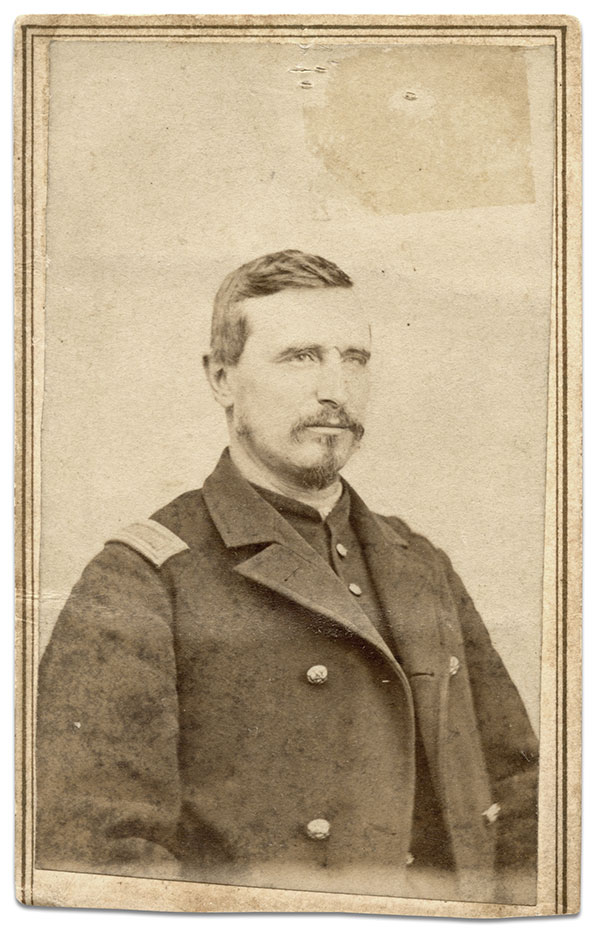
Companies A and C, commanded by Capt. Seymour B. Conger, were attached to the Army of the Potomac. At the Battle of Gettysburg, they were part of Col. Thomas Devin’s Brigade of Gen. John Buford’s Division. During the first day of fighting, the West Virginians, 59 sabers strong, were positioned on McPherson Ridge a couple hundred yards beyond the railroad cut. They suffered four men missing in action. The only monument to the regiment is located here.
The fragmented regiment unified into a single command in early 1864. During the months that followed, the 3rd operated in Virginia as part of Col. William H. Powell’s Brigade of Brig. Gen. William W. Averell’s Division of independent cavalry. The troopers performed well in actions at Salem, Wytheville, Lynchburg and Cove Mountain.
The 3rd and the rest of Averell’s Division pursued Brig. Gen. John “Tiger” McCausland after his Confederates after they ransacked and burned Chambersburg, Pa., on July 30, 1864.
Averell’s forces caught up with the town burners a week later at Moorefield, W.Va., and made three successive charges across the South Branch of the Potomac River under heavy fire, and eventually drove off the Confederates. The fight cost the West Virginians two of their most gallant and beloved officers during the second charge: Maj. Seymour B. Conger, who had survived the Battle of Gettysburg, and 1st Lt. Leonard Clark of Company E.
Col. Powell lamented, “In the midst of our exultations over our victory we were called upon to mourn the loss of our brave and gallant comrade in arms, Maj. S. B. Conger, Third West Virginia Cavalry, who fell while leading his regiment against the enemy. In his death the regiment lost an able, brave, intelligent, and energetic officer, and one who ever watched over its interest with jealous care. May he who succeeds him, and the officers of this command, emulate his example and that of the gallant Lieut. L. Clark, who fell at the head of his company at the same time.”
Conger, observed Averell in General Orders issued on Aug. 9, “found death as he had always wished, in the front of battle, with heart and hand intent upon the doing of his duty. Brave, steadfast and modest, when he fell this command lost one of its best soldiers, and his regiment and general a friend. The men who followed him in the charge will never forget his glorious example.”
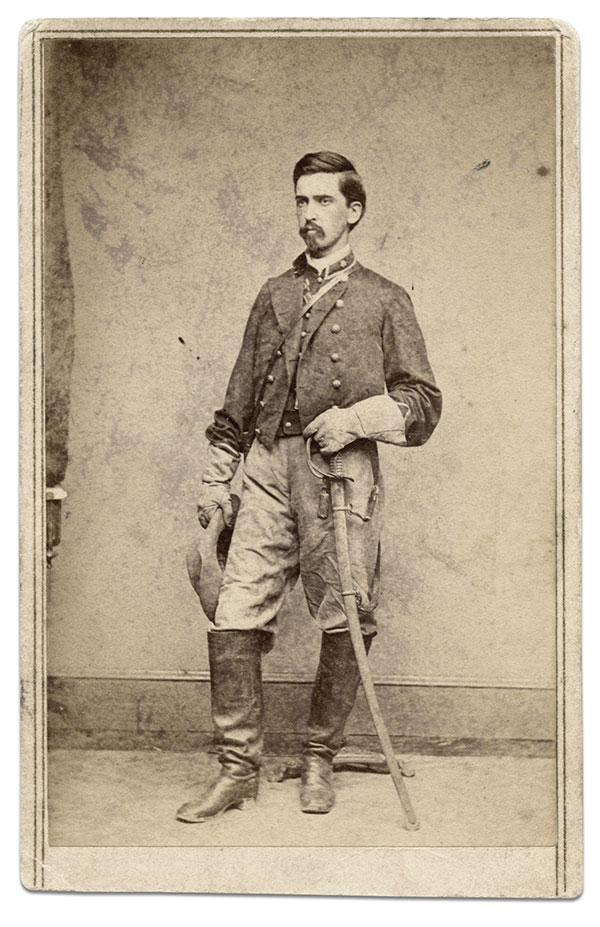
The 3rd and the rest of Powell’s Brigade next moved into the Shenandoah Valley and joined Maj. Gen. Philip H. Sheridan’s Valley Campaign in late 1864. The regiment, now under Lt. Col. John L. McGee in place of Conger, was attached to Col. Henry Caphart’s Brigade of Brig. Gen. George A. Custer’s Division. Many in the 3rd sported the Custer red tie to honor their general.
In April 1865, Custer’s Division skirmished with Confederates in Gen. Robert E. Lee’s Army of Northern Virginia after it evacuated the defenses of Petersburg and Richmond. The men of the 3rd engaged Lee’s army at several battles during the final days of the war, including Dinwiddie Court House, Five Forks, Sailor’s Creek and Appomattox Station. Sgt. Walter F. McWhorter of Company E received the Medal of Honor after he captured the flag of the 6th Tennessee Infantry at Sailor’s Creek, the only member of the regiment thus honored. He recorded the final movements of the 3rd against Lee’s army in a series of diary entries:
“April 6th Took the line of march up the railroad to Burkevill found the enemy engaged them charged their works Captured 8 thousand prisoners 163 pieces of Artillery 30 Battle flags & 5 general officers & stafs & incamped on the battle ground Captured a flag.”
“April 7th Took the line of march moving southwest direction 5 mile past Prince Edward Court house incamped for the knight Nothing occuring of note I sent to division headquarters to carry captured collors captured by my regt.”
”April 8th Took the line of march making a northwest direction to Prospect Station fed our horses and then took a west course to the Apomatox station where we found the enemy & charged them Captured 20 pieces of artillery 3,000prisoners 48 cars 4 engines and went to cam on the field.”
“April 9 Lay back with the train Heavy fighting in front ceased firing at 8AM A flag of truce sent to General Custer. Lee surrendering his army to Grant Great rejoicing with the soldiers went into camp within sight of the rebels.”
After the war, the regiment participated in the Grand Review in Washington, D.C., on May 23, 1865. From there, the regiment moved to Wheeling, where it mustered out on June 23, 1865.
In Washington and Wheeling, many of the soldiers had their image taken in uniform for the last time. On May 30, 1865, the regiment’s strength stood at 35 officers and 1039 enlisted men. The regiment’s total wartime losses included 6 officers, 40 enlisted men killed or mortally wounded in battle, and 136 enlisted men who died of disease.
References: The War of the Rebellion: A Compilation of the Official Records of the Union and Confederate Armies; Compiled Military Service Records, National Archives, Washington, D.C.; Record of Events of the 3rd West Virginia Cavalry, National Archives, Washington, D.C.; 1860 U.S. Census; West Virginia Adjutant General, Annual Report for the Year Ended December 31, 1864 and December 31, 1865; Theodore F. Lang, Loyal West Virginia From 1861 to 1865; Cecil D. Eby, “Porte Crayon:” The Life of David Hunter Strother; Richard Orr Curry, A House Divided: A Study of Statehood Politics and the Copperhead Movement in West Virginia; Letter from Charles H McLane to his father, July 1861, collection of the author; Letter from William H. Powell to Benjamin F. Kelley, June 1, 1891, collection of the author; Diary of Walter McWhorter transcribed by King McLaurin, West Virginia State Archives, Charleston, W.V.
Richard A. Wolfe is President of the Rich Mountain Battlefield Foundation. He is a retired Marine Corps officer and retired information technology manager. He collects West Virginia Civil War photographs, and all the images pictured here are from his collection.
Profiles

CUSTER PRIDE: Capt. Peter Oller Tabler of Company C sports a red tie and the Custer Medal presented to the men at the end of the war. Commissioned captain in March 1864, Tabler replaced John E. Hoffman, who was killed in action during a skirmish in Culpeper County, Va., on Nov. 23, 1863. Tabler survived his war experience and returned to his wife, Jane, and children. He eventually moved to Missouri, where he died in 1899 at age 77.
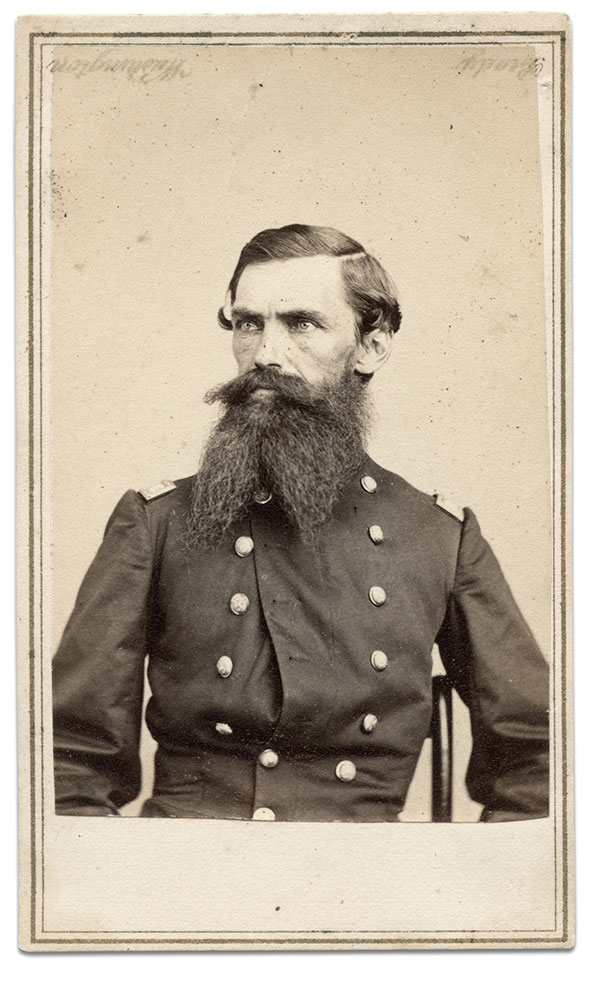
“PORTE CRAYON” TAPPED FOR COMMAND: David Hunter Strother (1816-1888) of Martinsburg achieved national and international fame in the 1850s when a series of humorous travel stories he authored and illustrated, using the pseudonym “Porte Crayon,” appeared in Harper’s Monthly magazine. He started his war service as lieutenant colonel of the 3rd in June 1862, though he was immediately tapped for various staff positions in the Department of West Virginia and never joined the regiment. He resigned in September 1864.

CAPTAIN’S BARS: Timothy Roane was born in Loudoun County, Va. Before the war, he had settled in Harrison County, and worked as a farmer and carpenter. He began his military service as a first lieutenant in Company E in October 1862, and advanced to captain the following July. The Custer Medal attached to his uniform in this portrait is topped by a miniature shoulder strap with captain’s bars. He survived the war and returned to Harrison County, where he died at age 51 in 1880. He outlived his wife. At least one child survived him.
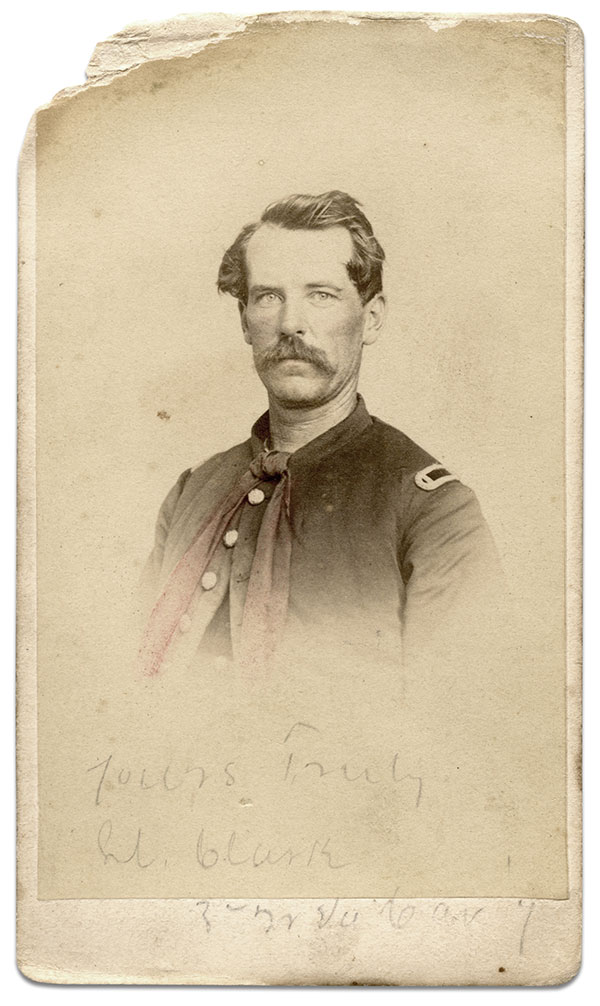
“YOURS TRULY LT. CLARK:” McGill G. Clark was born in Monongalia County, Va. in September 1836. Commissioned second lieutenant of Company D in September 1862, he was promoted to first lieutenant the following year. The last time his name appears on a government record is 1910. At the time he lived in Huntington, Ind., with his wife Isabella. Clark was 73 years old.
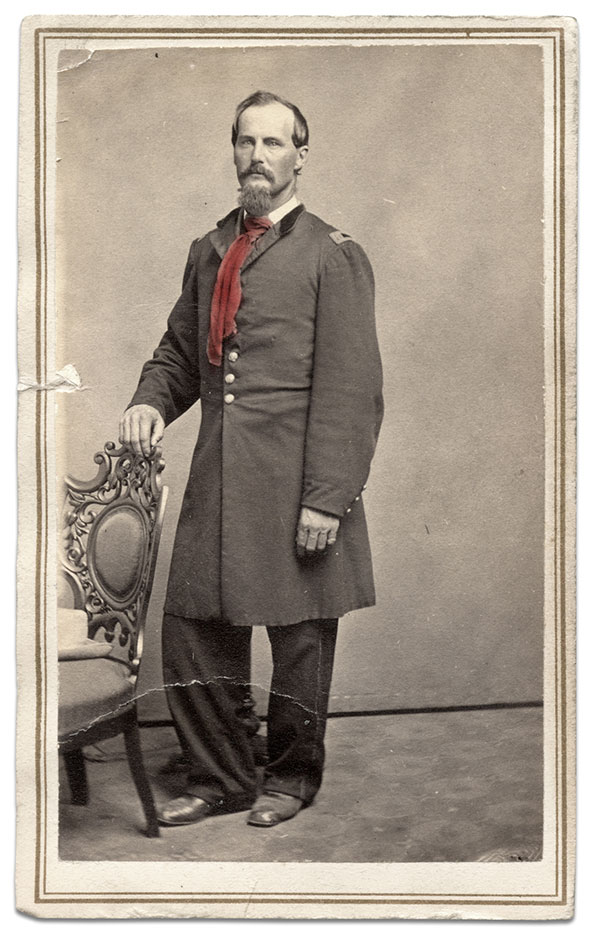
CAPTAIN OF COMPANY D: George Washington McVicker of Morgantown was less than two weeks shy of his 31st birthday when he received a commission as first lieutenant of Company D. He assumed command of the company upon the death of Capt. James Utt, during the skirmish with Confederate raiders at Piedmont Station on May 16, 1863. McVicker soon received his captain’s bars and served in this capacity for the remainder of the war. He returned to Morgantown after the regiment mustered out, and resumed his life as a farmer. McVicker married in 1873, and started a family that grew to include three children. He was 82 years old at his death in 1913.
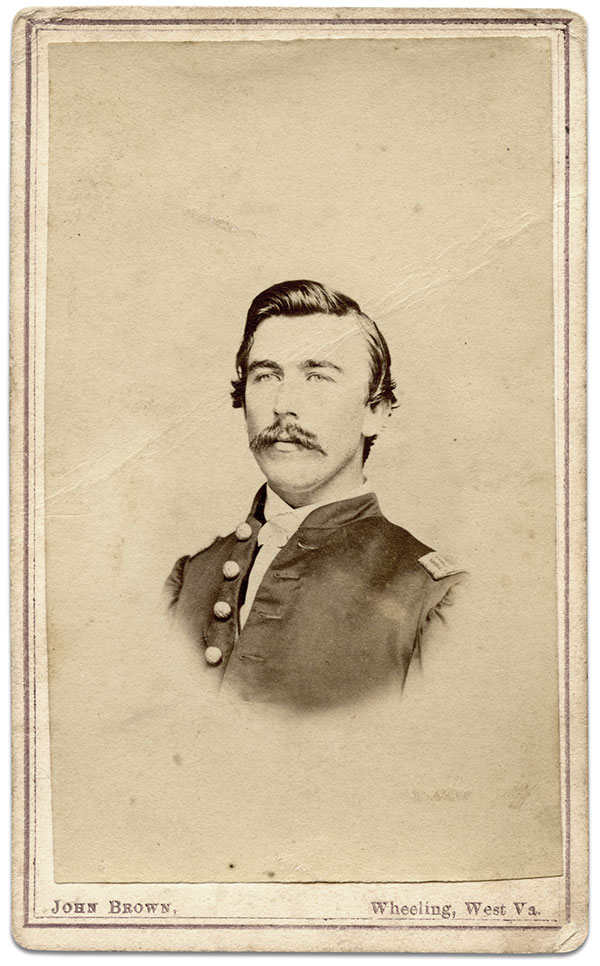
WOUNDED IN THE SHENANDOAH: Jacob Webster Heavner suffered a gunshot in the back on July 24, 1864, during the Second Battle of Kernstown, Va., part of the Shenandoah Valley Campaign. A native of Harrison County, Heavner joined the regiment as first lieutenant of Company M in April 1864. Heavner rejoined his comrades and was promoted to captain in May 1865. He received a brevet rank of major for his war service. He died at age 86 in 1927.

NATIVE NEW YORKER: Charles E. Anderson, a native of Lawrence County, N.Y., settled in Weston, Va., at some point before the war. In September 1862, he enlisted in Company I and served as first sergeant, and received a captain’s commission in November 1863. Here, he wears the red Custer tie to which is affixed the Custer Medal. Anderson returned to Weston after the war, where he married and worked as a wholesale agent. He lived until age 87, dying in 1921.
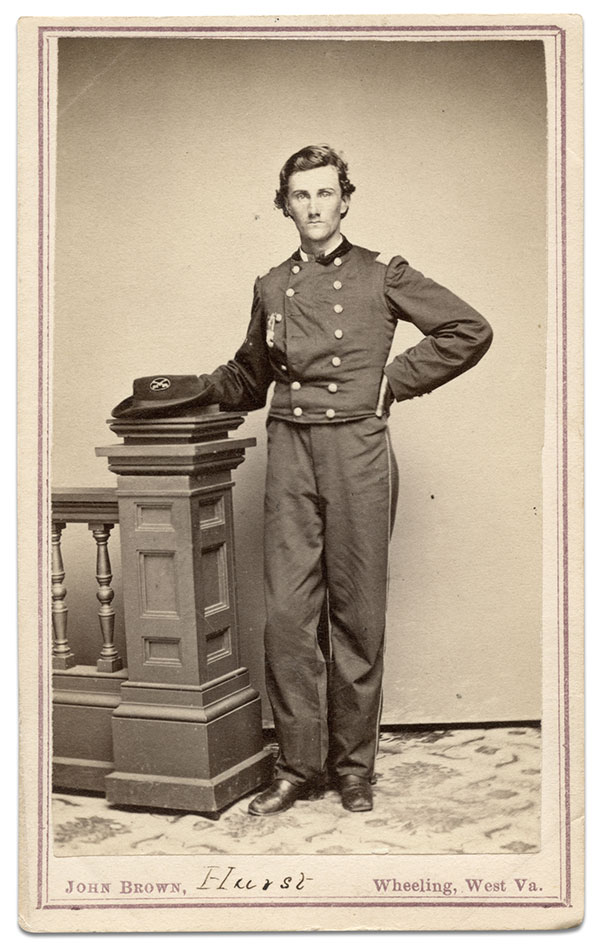
SECOND KERNSTOWN CASUALTY: John L. Hurst of Albemarle, Va., began his war service as captain of Company M at Buckhannon,W. Va., in April 1864. Wounded in the left heel three months later at the Second Battle of Kernstown, he recovered and rejoined his company. Promoted to major in May 1865, he was brevetted lieutenant colonel for gallant and meritorious service during the war. He married in 1868, and fathered two daughters. He lived until 1918, dying at about age 74.

TWICE A PRISONER OF WAR: William McGinnis fell into enemy hands on two occasions during his service as a private in Company E. He was captured near Moorefield, W. Va., on Feb. 17, 1863, and again at Winchester, Va., on June 15, 1863. In both cases he was paroled and exchanged after relatively short stints as a prisoner of war. At the end of his military service, he returned to his home in Preston County. McGinnis was about 53 years old upon his death in 1886. His wife and a son survived him.
SPREAD THE WORD: We encourage you to share this story on social media and elsewhere to educate and raise awareness. If you wish to use any image on this page for another purpose, please request permission.
LEARN MORE about Military Images, America’s only magazine dedicated to showcasing, interpreting and preserving Civil War portrait photography.
VISIT OUR STORE to subscribe, renew a subscription, and more.

